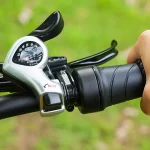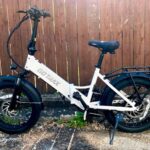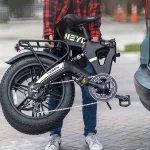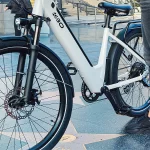Anyone with an electric bike, will tell you they’re so much fun to ride. They get so many people out there cycling more. Even to places they would not have dreamed of cycling, with a regular bike. These can include picturesque mountainous destinations and rugged off-road trails. So, if you have an electric bike, you’re going to want your battery range to last as long as possible. This will help you get the most out of your riding experiences. Before continuing though, electric bike battery range is as defined below.
Electric bike battery range – The distance an electric bike will cover on one battery charge. Usually measured in either miles or kilometers.
By adopting certain behaviors and habits, you can increase your electric bike battery range. These generally come under the following:
- How you maintain your battery
- How you set up your electric bike
- The manner in which you cycle
In this article, I will talk about the most actionable of these behaviors and habits. This will help you stay out on your electric bike longer, to get the best cycling experiences you can. But before I go any further, below is a table, outlining some electric bike battery range increasing tips.

Table of Contents
Keep Your Tires Pumped Up
In a nutshell, the flatter your tires, the more it will be a drain on your battery. This is because, if your tires are flat, you need to put in more effort to move your bike forward. So your tire pressure is definitely something you should pay attention to, if you want to maximize battery range.
Your tires should be pumped up to the pressure mark given on the sidewall of the tire. If you’re riding whilst your tire pressure is below this pressure mark, your battery is unnecessarily using up more of its charge.
Inflating tires right up to their maximum, though, is not recommended. If a tire is too inflated, it will not connect to the ground properly, making it less efficient. The less efficient the tire, the more draw from the battery.
German tire manufacturer, Schwalbe, has a . This allows you to know the optimum tire pressure, for different scenarios, to help you get as much range as possible. 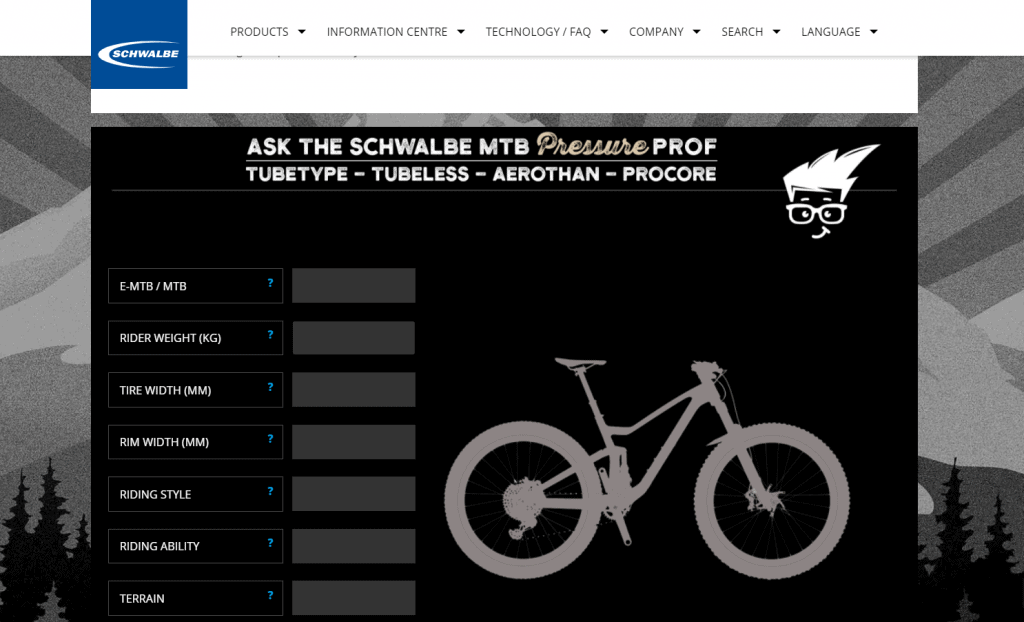
Tire Weight
Your battery is going to need more energy to move your bike forward, the heavier the tires are. So heavier tires, means less range.
There are different types of tires you can have for your bike, depending on what sort of cycling you’ll be doing. These different tire types will have variations in weight. For example, you can have fat tires which are very heavy. Riding with these tires tends to be great fun. They are ideal for riding on off-road trails and other challenging conditions. Like riding in snow and sand. But due to their weight, they will use up more battery compared with thinner tires.
If you’re using your electric bike for commuting and general road use, you can opt for a thinner and lighter tire. This will preserve more of your battery’s charge during rides.
Sometimes, when deciding on which tires for your electric bike, you may find yourself having to decide on a trade off. This would be between what you’ll be using the bike for and the impact the tire weight will have on the battery range.
Tire Tread
How the tire interacts with the surface, it’s riding on, affects the tire’s traction and rolling resistance. This therefore affects the bike’s efficiency. Tread plays a major part in this. The more efficient your bike is whilst cycling, the less charge is being used up in your battery. So you want tire tread that will give the most efficiency, for the surface you’re riding on. This will help you to get the most range from your battery. In a nutshell, you want the best tread for the conditions, to get more range.
So riding on the road with tires that have tread meant for off-road use, is not recommended. There will be more rolling resistance, compared to riding with slick tires (ideal for road use). Here the tire will be less efficient compared to a slick tire, resulting in more battery drain.
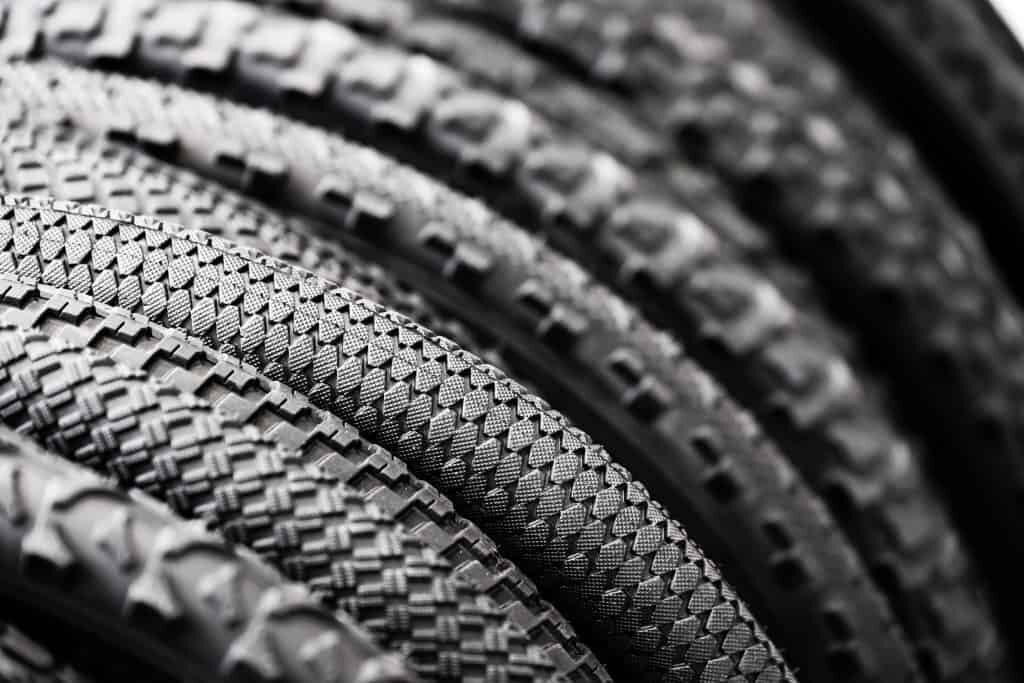
It is not recommended riding with slick tires in off-road conditions. The tires won’t be gripping the ground well enough, resulting in poor traction. Again, resulting in your bike traveling with less efficiency. This will mean more draw from your battery. So to get the most from your battery here, use tires with tread purposefully for off-road conditions.
Sometimes, people opt for a halfway house. Some electric bikes have tires that can handle light off-road, but also roll well on the road. You would find these types of tires on gravel electric bikes, for example. This is beneficial, if you’re anticipating you’ll be riding in both conditions.
Braking
Effective use of braking will help prolong your battery range. You can do this by braking gently over a long period, as opposed to quick sudden braking. This is a far more economical way of breaking, that uses less energy.
You can achieve this by planning ahead whilst cycling, by keeping your eyes peeled for what’s in front of you. This even includes anything at a far distance. Taking this precaution reduces the chance of you having to brake heavily, due to any sudden surprises. As you may gather, this is also a safe way of cycling.
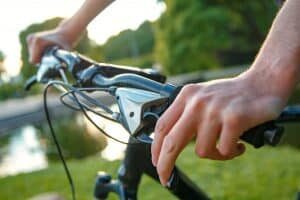
Some electric bikes have an energy efficient braking system, known as regenerative braking.
Regenerative braking works, by converting some of the kinetic energy that is lost through braking, back into your battery. As a result, this energy is recycled and not lost to the environment. Your battery can draw upon this retained energy, for further use of your electric motor. This allows for braking to be less of a drain on your battery.
Most electric bikes currently don’t have this braking system. But it’s something you can look out for, when picking an electric bike. This will add to the cost of your bike, but can contribute towards you experiencing longer cycles.
Pedaling
Pedaling harder will use up your battery at a faster rate, as a general rule of thumb. I say as a general rule of thumb, for the below reason.
Electric bike motors will either have a cadence or torque sensor. Both of these sensors engage the motor when you’re pedaling. With torque sensors, the speed of the motor is automatically relative to the rider’s pedaling speed. Whereas, with cadence sensors, the rider determines the speed of the motor, by manually adjusting the settings. So here, the rider needs to manually adjust the speed of the motor, to match the speed of their pedaling.
With this in mind, as long as the motor speed is relative to your pedaling effort. Cycling at a leisurely pace will use up less battery, compared to if you’re cycling at a high speed. Obviously, it’s your preference how you cycle. But you can take this into account during, or even whilst planning, a cycle journey.
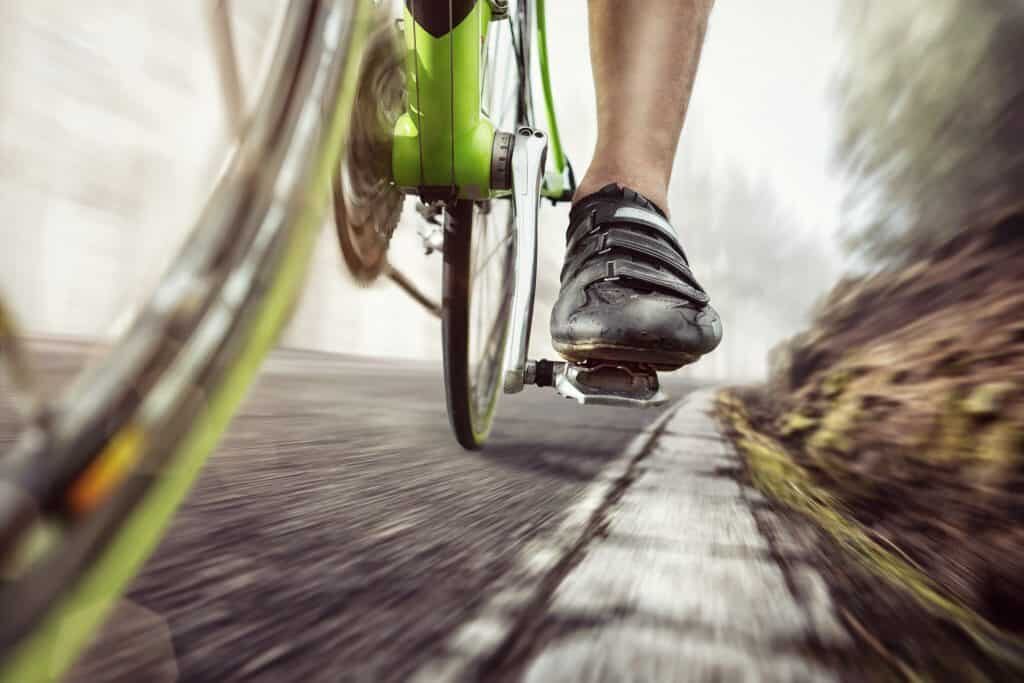
A handy tip, is you can take advantage of freewheeling when going down hills. This preserves more of your battery. You can let gravity take over for a bit and do the work, rather than the electric motor.
Battery Maintenance
Take good care of your battery and it will take good care of you. Looking after your battery, will minimize its wear and tear. This will help it to work better and provide better range. Below are certain tips, to help you better maintain your battery.
- Avoid running your battery flat as often as possible. Generally electric bikes will have a Lithium-ion battery. Running these batteries flat, can contribute towards increased wear on the battery cells. It’s always likely you’ll go on long cycle rides though, where you will run your battery flat. But try to keep this as minimum as possible if you can, to get the best out of your battery. It is also advisable to avoid storing your battery flat, for long periods of time.
- Following from above, it’s best to store your battery with a charge, to maintain its performance. It’s advisable, though, to allow a rest period for approximately half an hour after you’ve finished your cycle, before recharging it. This allows the battery’s chemistry to balance itself out first.
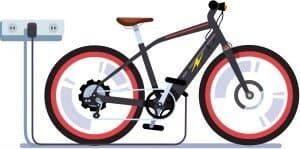
- Storing your battery fully charged for prolonged periods, is not recommended. This can place added pressure on the cells, leading to increased wear. Storing with around 60% charge is suitable. It is not such an issue to store your battery fully charged between cycles, if you’re riding often. For example, if you’re using your electric bike for the daily commute.
- Cycling in cold weather can affect your battery’s performance. If you’re cycling on cold days, you can insulate your battery, by using a . This will prevent the temperature from compromising your battery range.

- Further to above, you should also avoid storing your battery in a cold environment. During the winter, it is advisable to store your battery inside at room temperature, to get the best out of it. This may mean having to detach your battery from your bike, if you store your bike outside.
- Riding and storing your battery in hot conditions, can affect its range as well. Heat causes your battery to work harder and contributes to more wear, which reduces range. Electric bike batteries like cool, dry conditions. So where you store your battery, should meet this criteria.
If you’re cycling on a hot day, it may be unavoidable for your battery to get warm. You can allow though, for the likely compromise on your batteries range, when planning a ride. You could also minimize the impact of this, by keeping your bike away from direct sunlight, when stopping for a rest.
If you’re transporting your electric bike by car on a hot day, you could try storing your battery in the coolest place in your car. This could be under the seat away from direct sunlight. Again, you would need to detach your battery from your bike.
Weight
The heavier the electric bike and the rider, the more this compromises the range of the battery. This is due to the increase in weight, requiring more effort from the motor.
If you’re riding an electric bike to lose weight, you may find the battery range increases, the more you lose weight.
Using an electric bike to carry cargo, will also reduce the range. However, the more cargo you carry, the more helpful you will find the electric assistance. Sometimes you may have to trade off the amount of cargo you want to carry, against the battery range you need.
Electric bikes allow you to take advantage of these extra luxuries though. For example, riding with fat tires, or carrying the kids to school on the back, would be harder on a normal bike.
The more you ride your electric bike, the more of a sense you may get for how far it can travel, with different variations in weight. Like when carrying different amounts of cargo, or different tires even. Trial and error will come in to play here. Bosch, however, provides a useful , to help you have an idea of how much range you can expect, in different situations.
Pedal Assist Modes
Electric bikes have different pedal assist modes. These determine the level of pedal assistance you get. The number of pedal assist modes can vary from bike to bike. These modes can start from eco, the least amount of assistance, right up to turbo, the most amount of assistance.

The higher the pedal assist mode you’re riding in, the more it will decrease your battery range. There will be varying reasons that determine which mode you’ll decide to be riding in, at any given point. These could include the examples below:
Reasons for Turbo Mode
- To get up a steep hill
- To get somewhere quickly, if you’re carrying a significant amount of cargo
- To commute to work quickly without sweating
Reasons for Eco Mode
- If you want a good workout, whilst still requiring some assistance
- If you want an extra boost, whilst riding up a mild gradient
- To reduce fatigue, whilst you’re on a lengthy ride
Being watchful of your choice of pedal assist mode selections, can help you get more range from your battery. For example, only using turbo mode when necessary. This could be if you’re going up a steep hill and the other modes are not going to cut it.
It’s your choice though, of which pedal assist mode you use. You may want to ride in turbo mode as much as possible, simply because you find it more fun. Again, you may sometimes find yourself having to find a trade off, between your preferred pedal assist mode and the battery range.
Accelerating
Using the pedal assist for accelerating, uses up more battery, compared to using it whilst at cruising speed.
With this in mind, you can be more selective of when you use your pedal assist. For example, using pedal assist, when starting straight from a stop, uses a lot of power. So you could opt to have the pedal assist off altogether, when setting off from a stationary position. You may start using the pedal assist, once you’re up and running.
Accelerating quickly will use up more battery, compared to if you build up speed gradually, until you arrive at cruising speed. This is a similar principle to braking, as mentioned earlier. Again, it’s up to you how you ride. These are only tips to help you conserve your battery, for you to use as and when you choose.
Lubricate the Chain
If your bike chain is not well lubricated it will create resistance. This will decrease your electric bike’s efficiency and therefore your battery range. So be sure to lubricate your chain regularly, if you want to stay out on your electric bike longer. Muc-off provides a suitable for electric bikes. There are electric bikes on the market which have a belt instead of a chain though. These belts do not need any lubrication at all.
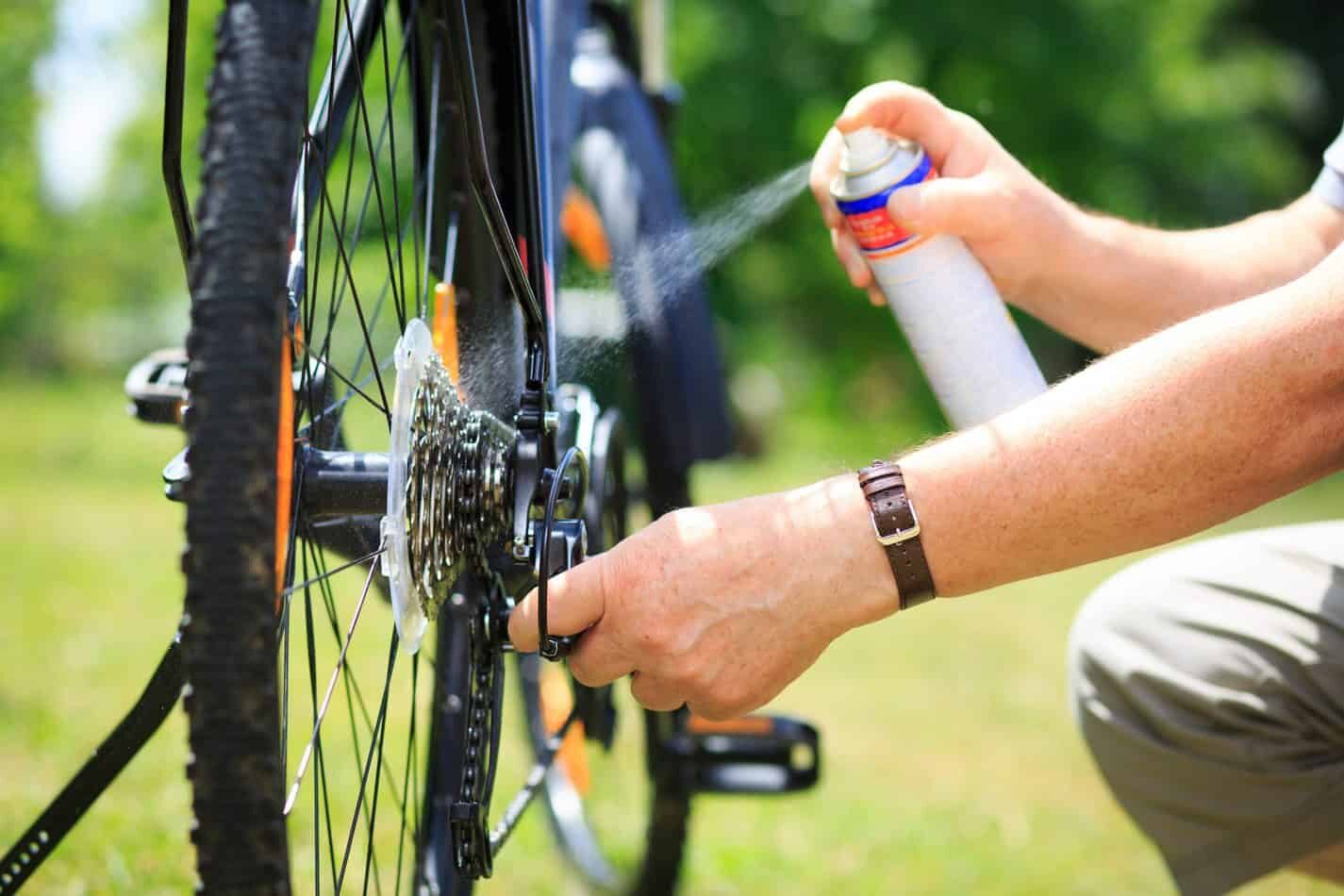
Riding Position
Yes, the position you’re riding in, can have an effect on your electric bike battery range.
Cycling in an upright position creates more wind resistance. This means you’ll be working harder and your battery will be depleting faster. Positioning yourself in a forward (aerodynamic) position, whilst riding, will reduce wind resistance. This will help preserve more of your battery.

Road bikes and gravel bikes, both have drop handlebars. These are designed especially to allow you to cycle in an aerodynamic position.
Bear in mind, though, riding in an aerodynamic position, will limit your visibility. This is because you will not see all around you as well, compared to riding in an upright position. This can compromise your safety, especially when riding in urban areas, where there’s many potential hazards. If you prefer, you could find a balance between these 2 riding positions. You could ride halfway between entirely upright and entirely forward.
Conclusion
All the above tips and advice have a consistent theme. This is that the less effort the electric assistance is exerting, the more range you’re going to get. Keeping that in mind, can allow you to be competent at managing the range of your electric bike battery.
You don’t have to obey the above advice religiously. But being aware of these tips, can help you get the most out of your electric bike. After all, being too obsessed with your battery range, could take all the fun out of electric biking.
The advice is there, for whenever it will come in useful though. You may find there are certain times, when these tips are more beneficial than other times. These can be if you’re going on a lengthy ride, carrying a considerable amount of cargo, or embarking on a hilly route. All events that will guzzle your battery charge. Adhering to these recommendations can reduce any range anxiety you may have.
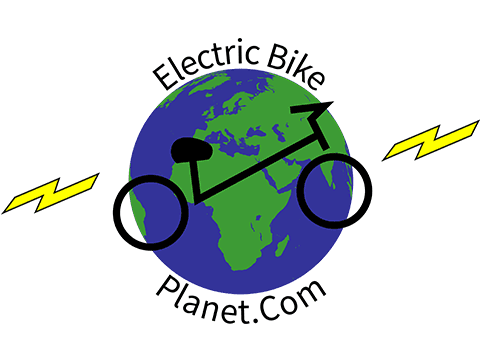
Captain Colyer is an expert in sustainable transportation with a Master’s degree in Environmental Engineering. With over 9 years of experience, he is dedicated to advancing eco-friendly commuting solutions. His work focuses on the latest advancements in electric bike technology and promoting sustainable living practices. At ElectricBikePlanet.com, Captain Colyer shares his in-depth knowledge and practical insights to help readers make informed decisions about electric bikes. Join them on their electric journey for the best e-bike advice and recommendations, and connect on Facebook, Pinterest, and Instagram.


